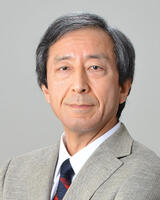経歴
-
2021年04月-継続中
早稲田大学 大学院情報生産システム研究科 教授
-
2009年04月-2021年03月
筑波大学 先端学際領域研究センター および 大学院システム情報工学研究科 教授
-
2014年04月-2018年03月
国立情報学研究所 客員教授
-
2013年04月-2018年03月
理化学研究所 客員研究員
-
2008年04月-2009年03月
日本電信電話株式会社 コミュニケーション科学基礎研究所 主幹研究員
-
2008年12月-2009年02月
University Erlangen-Nuremberg, Germany 客員教授
-
2004年04月-2008年03月
北海道大学 大学院情報科学研究科 客員教授
-
2003年04月-2008年03月
日本電信電話株式会社 コミュニケーション科学基礎研究所 メディア情報研究部長
-
2006年04月-2007年03月
東京大学 大学院情報理工学系研究科 非常勤講師
-
2000年04月-2003年03月
日本電信電話株式会社 コミュニケーション科学基礎研究所 信号処理研究グループリーダ
-
1999年01月-2000年03月
日本電信電話株式会社 生活環境研究所 グループリーダ
-
1996年07月-1998年12月
日本電信電話株式会社 マルチメディアシステム総合研究所 主幹研究員
-
1987年08月-1996年06月
日本電信電話株式会社 ヒューマンインタフェース研究所 主任研究員
-
1981年04月-1987年07月
日本電信電話株式会社 横須賀電気通信研究所


Click to view the Scopus page. The data was downloaded from Scopus API in January 09, 2026, via http://api.elsevier.com and http://www.scopus.com .